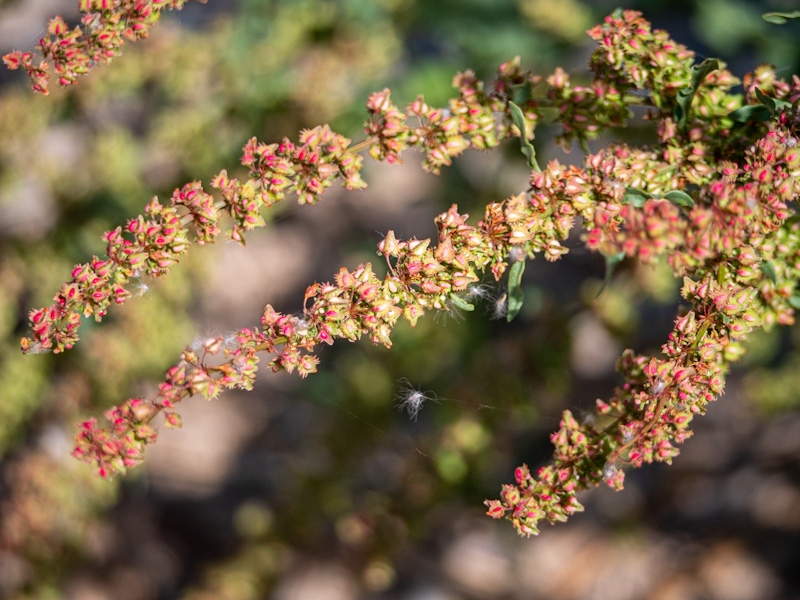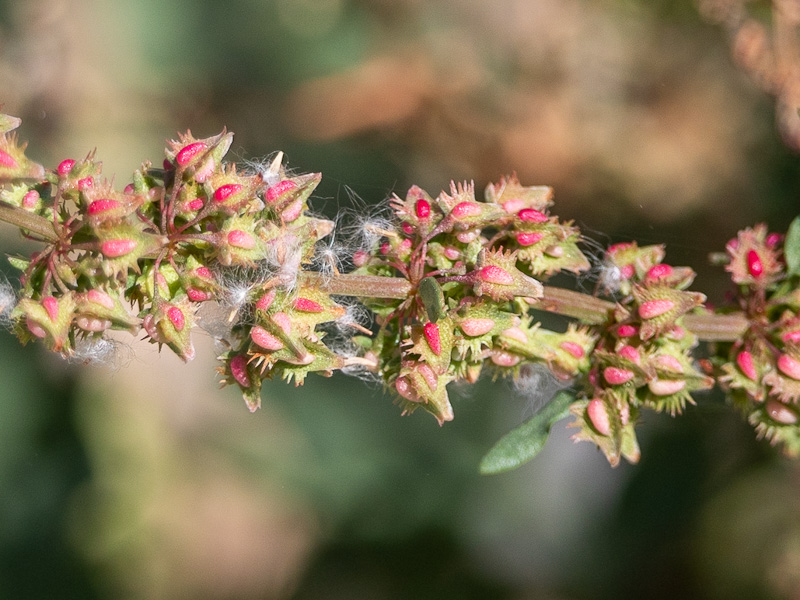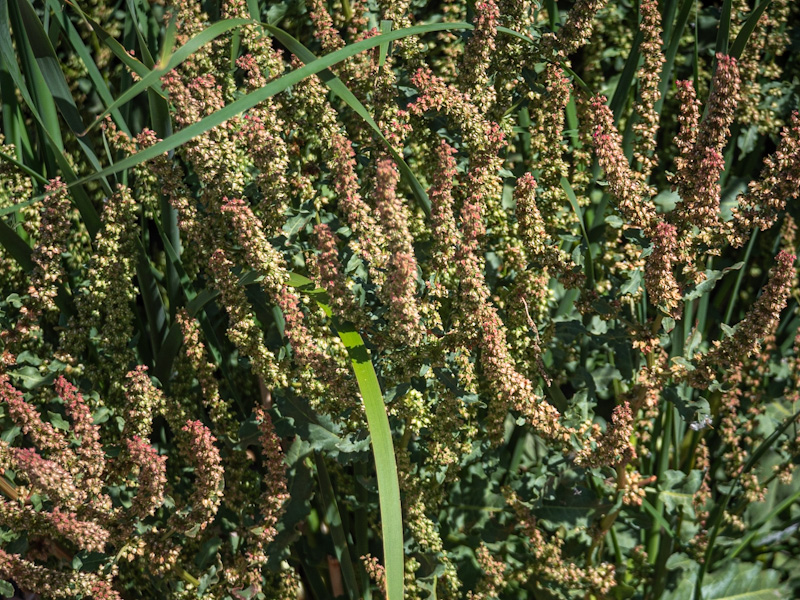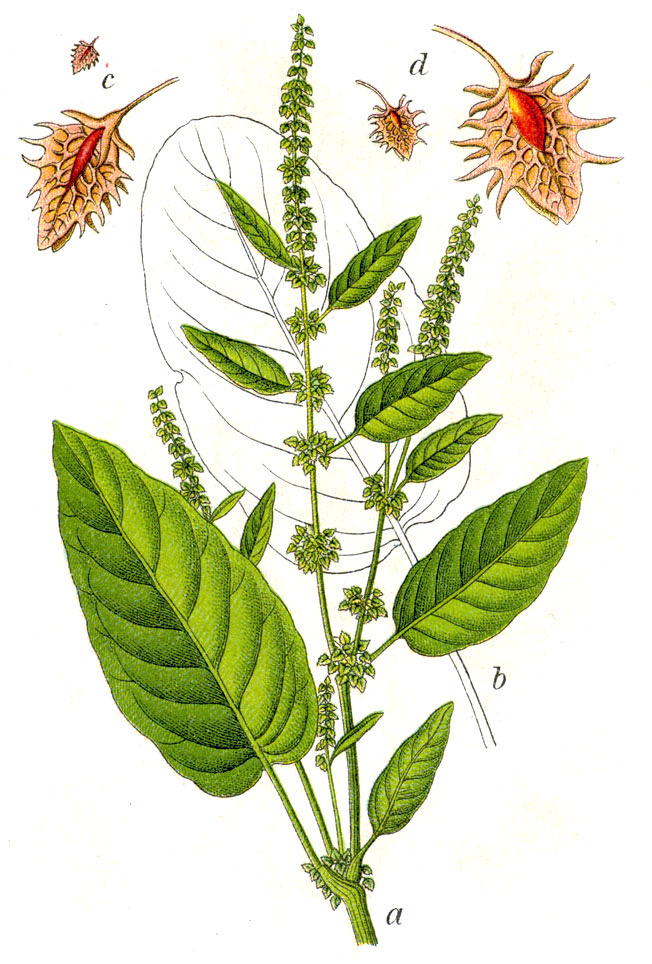
Common Names: Broad-leaved Dock, Bluntleaf Dock, Dock Leaf, Dockens, Butter Dock, Bitter Dock
Synonyms: The name, Rumex obtusifolius, was assigned by Carl Linnaeus in the 18th century, and has remained unchanged, although there are numerous subspecies.
Subspecies: agrestis, sylvestris
Family: Polygonaceae (Buckwheat)
Habit: perennial forb, herb
Size: up to 4 feet
Flowers: male/yellow, female/red
Bloom: April, May, Jun, Jul, Aug, Sept
The blooming period usually occurs during the late spring and lasts about 2 weeks, after which the fruits mature slowly during the first half of the summer.
Leaves: alternate
Fruit: Produces up to 60,000 seeds per year
Description:
Broad-leaved Dock is one of the more ornamental species of Docks. It is fairly easy to distinguish from other Docks by its shiny leaves, which are rather broad, well-rounded or cordate at the base, and crisped along their margins. Another distinctive characteristic is the appearance of the calyx, which has spiny teeth along its margins.
The basal leaves are up to 1′ long and 4″ across. Their petioles are long and slender, while their blades are oblong-ovate or oblong-cordate, crisped and slightly undulate along the margins, and glabrous.
Each stalk terminates in a panicle of whorled racemes up to 1′ in length. The whorls of greenish red flowers are somewhat interrupted along the length of the racemes. The flowers droop downward from pedicels about ½” in length when they are fully developed. Each flower is about ¼” long, consisting of 6 sepals (3 inner and 3 outer sepals) and no petals. Like other Rumex spp. (Docks), Broad-leaved Dock is monoecious and has staminate (male) and pistillate (female) flowers on the same plant. Both types of flowers are intermingled together on the racemes. The male flowers have 6 stamens and inner sepals that are dull yellow, while the female flowers have a pistil and inner sepals that are often red. As the female flowers develop, their inner sepals become enlarged and surround a single tubercle (hard-coated seed). Each face of this tripartite fruit is oval-cordate or oval-deltoid in shape; its margins are membranous and there are 2-4 spiny teeth along each margin, particularly in the upper half. In bright sunlight, these fruits often turn bright red and are rather colorful. A flower produces a single seed, wrapped in the persistent tepals, which form a capsule-like structure and dry to rusty brown.
Young leaves are edible fresh or cooked. These leaves do have a bitter taste, especially the older they become. Some people will cook leaves in at least one change of water in order to reduce the bitterness.
Distribution: It is native to Europe, but is found on all temperate continents. It is a highly invasive species in some zones, resulting from its abundant seed dispersal, adaptability to reproduce, aggressive roots, ability to tolerate extreme climates, and hardiness.
Seen: Wetlands Park
Habitat: disturbed areas; pastures, river banks and open moist places



References:
